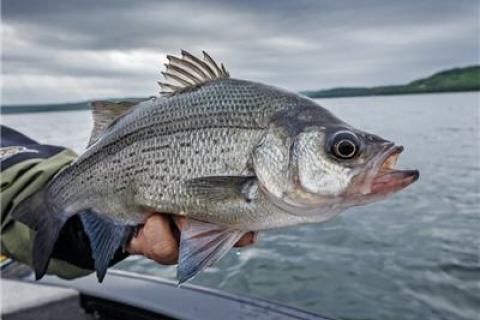
When water temperatures reach the low 50s, whites start moving upstream, out of the lakes and reservoirs, until they reach a dam or other obstacle that blocks their travel. Here the white bass stack up and continually gorge themselves, waiting for the magic 55-degree mark to complete their spawn.
One of America’s most popular gamefish is the white bass. The most exciting time to fish for them is during their annual spring spawning run up streams and rivers.
Here's a handy guide from the Texas Parks and Wildlife department that shows you how to tell the difference between a white bass and a striper. Check out the characteristics used in identifying white bass.
Hungry, aggressive white bass aren’t too picky about what they will eat, but 1/8- to 1/4-ounce curly tail fishing lure or hair jigs are most popular, with in-line spinners coming in a close second. White is usually best, but chartreuse, yellow, pink, and other bright shades will work, too.
I like using a lightweight spinning reel on a 7-foot softtip rod with a stout butt and 4- to 6-pound test line. What I like most of all, though, is frying up a limit of these good-eating fish.
By Larry Whiteley, Host of the award winning
Outdoor World Radio
- 4703 views

